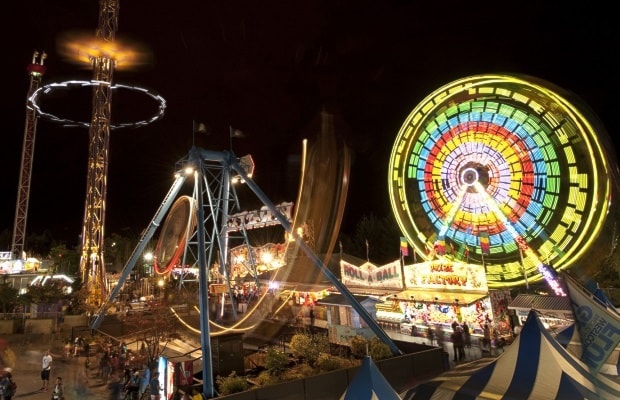One of B.C.'s grandest and most historic traditions is up and running again, but it's not entirely clear how long it can keep going.
I'm talking about the Pacific National Exhibition, a 17-day whirlwind of entertainment that combines midway rides, livestock exhibitions, concerts, exhibits of all shapes and sizes and way too much food.
But as time goes on, the annual fair faces mounting pressures.
It is essentially a throwback to earlier times, when it was the only big event in town. It began as an agriculture fair, located on the distant outskirts of the young town of Vancouver (its east side location was fairly remote when it began in 1910).
Over the years, it evolved into a major entertainment destination and a significant cultural event that celebrated the idea of British Columbia itself. For years, school children in the Lower Mainland got a major prize with their final school report card of the year: a free ticket to the PNE (this year, kids under 13 get in free).
And so, for decades, the PNE was a big deal. Visiting the fair was a tradition for thousands of families, who would arrive early in the day and leave late at night, exhausted from seeing and trying everything, from riding the midway to watching the Demolition Derby, the Festival of Forestry, livestock shows and, of course, eating in the Food Building.
The famous Challenger Map of B.C. was located there for years, as was the B.C. Sports Hall of Fame. This is where the Boat Show, Auto Show and Home Show got their starts.
The entertainment was legendary, and huge stars appeared: Elvis Presley, Frank Sinatra, Bob Dylan, Johnny Cash, Neil Young and, of course, The Beatles.
But, over the years, the PNE found itself looking a bit aged, a corny piece of the past that seemed overtaken by newer, faster and more varied forms of entertainment. It had become a period piece and its nostalgic charm wasn't enough to make it the dominant event of the year anymore.
Still, the fair has survived, and this year hundreds of thousands of people will walk through its gates, a testament to its endurance and the widespread public support for it.
However, recent years have seen the emergence of all kinds of neighbouring community-based festivals and celebrations, and they pose direct competition to the PNE.
While there's nothing wrong with community festivals, the fact that a number of them are seeded with municipal funding sets them apart from the PNE, which does not receive a subsidy from B.C. taxpayers.
And this raises the legitimate question of whether the PNE should qualify for a financial subsidy from the City of Vancouver (which is the owner of the PNE) or the B.C. government, if that's what it takes to ensure that it survives down the road.
The PNE's financial situation can be precarious: too much rain during the 17-day run of the fair can spell disaster, as happened several years ago.
If the PNE fair were to one day disappear, it would be a major hit to the economy of Metro Vancouver. The PNE is the largest employer of youth in all of B.C., and many young workers who work the fair make enough money in a short period to pay for a big chunk of their post-secondary education (I was once one of those kids, having worked 10 consecutive fairs some time ago).
The PNE itself estimates it contributes about $140 million to the economy every year. That includes about $25 million in taxes and $50 million in wages. As well, about 25,000 people from outside Metro Vancouver visit the fair, and stay an average of three nights in hotels and motels.
That's a lot of economic activity, and it cannot be allowed to disappear.
To be clear, the PNE board is not asking for financial help from any level of government, at least not yet. But it's important to note the PNE fair is the only major fair in North America that doesn't receive a generous taxpayer-funded subsidy.
The organization reports a modest financial surplus every year, but attendance at the fair has declined three straight years (from 962,000 in 2010 to 712,000 last year). Of course, attendance figures can be looked at in a glass half-full way: attracting more than 700,000 customers is still a sign of impressive public support.
So visit the fair. Try to win a house or a car. Ride the roller coaster. Don't let B.C.'s greatest annual celebration disappear any time soon.
Keith Baldrey is chief political reporter for Global BC.
